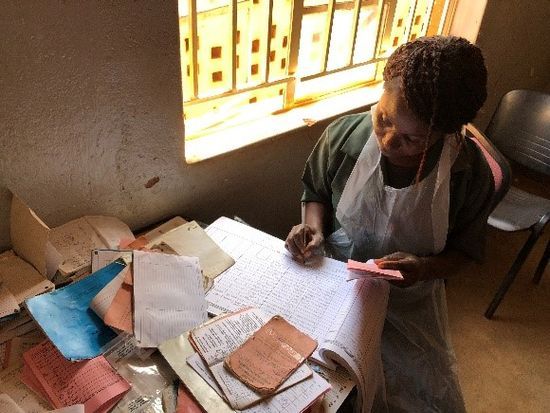
Health inequality monitoring requires two streams of data: data about health and data about dimensions of inequality (such as socioeconomic, geographic or demographic characteristics). This course examines four common data sources for health inequality monitoring, highlighting their strengths and limitations, as well as opportunities to strengthen them for use in health inequality monitoring. It also guides learners through the process of data source mapping and linking between data sources.
Photo credits: Credit: WHO / Monta Reinfelde
Language: English
Health topic
Course information
Overview: High quality sources of disaggregated data are the backbone of regular, reliable and relevant health inequality monitoring practices. In some situations, data for inequality monitoring may be limited, incomplete, or of poor quality; in other situations, there may be a multitude of potential data sources that could be used for monitoring.
This course provides learners with the background knowledge and techniques for assessing, selecting and improving data sources for health inequality monitoring. The course covers household surveys, administrative data sources, civil registration and vital statistics (CRVS) systems and censuses, as well as approaches for data source mapping and linking. The target audience is monitoring and evaluation officers, though the course is suitable for anyone with a general interest in health data and inequality monitoring.
This course is part of the Health Inequality Monitoring Foundations series, featuring the following courses: (1) Overview, (2) Data Sources, (3) Health Data Disaggregation, (4) Summary Measures of Health Inequality and (5) Reporting.
Course duration: Approximately 1.5 hours.
Certificates: A Record of Achievement will be available to participants who score at least 80% of the total points available in the final assessment. Participants who receive a Record of Achievement can also download an Open Badge for this course. Click here to learn how.
What you'll learn
- Attributes of high-quality data sources for health inequality monitoring
- Categories of data sources for health inequality monitoring, including examples
- Strengths, limitations and opportunities to improve common data sources for health inequality monitoring, including household surveys, administrative data, civil registration and vital statistics systems, and censuses
- Data source mapping techniques to assess data availability
- Strategies for linking data from multiple sources
Course contents
Introduction:
This module situates data sources within the five-step cycle of health inequality monitoring, overviews the attributes of high-quality data sources, discusses broad categories of data sources and introduces the forthcoming components of the course.Module 1: Household surveys:
This module covers the use of household surveys as a data source for health inequality monitoring. By the end of the module, you will discuss the characteristics of household surveys and why they are an important data source for health inequality monitoring. You will identify strengths, limitations, and key considerations of using household survey data, as well as opportunities for strengthening this data source.Module 2: Administrative data sources:
Module 2 addresses administrative data sources and their applicability for health inequality monitoring. By the end of the module, you will: discuss general characteristics and examples of administrative data sources; identify strengths, limitations and key considerations of administrative data sources for health inequality monitoring; and identify opportunities for strengthening administrative data sources.Module 3: Civil registration and vital statistics systems:
This module covers civil registration and vital statistics (CRVS) systems and their applicability for health inequality monitoring. By the end of the module, you will: discuss the characteristics of CRVS systems and their common functions; identify their strengths and limitations; and identify opportunities for strengthening this data source.Module 4: Censuses:
This module covers the use of censuses for health inequality monitoring. By the end of the module, you will discuss the characteristics, strengths and limitations of censuses, and how they can be used for health inequality monitoring (including supporting the improved quality and expanded use of other sources). You will also identify opportunities for strengthening censuses.Module 5: Data source mapping:
Module 5 covers the purpose and process of data source mapping. By the end of the module, you will explain when and why data source mapping is used and describe the four sequential tables used for data source mapping. You will be prepared to apply data source mapping techniques to assess data source availability across different contexts and will be able to access template tables.Module 6: Data linking:
This module explains the process of data linking, and when it is used. By the end of this module, you will explain the reasons and describe the data requirements for linking between data sources. You will explain the general process of data linking and be able to access a template table.Final assessment
Enroll me for this course
Certificate Requirements
- Gain a Record of Achievement by earning at least 80% of the maximum number of points from all graded assignments.
- Gain an Open Badge by completing the course.